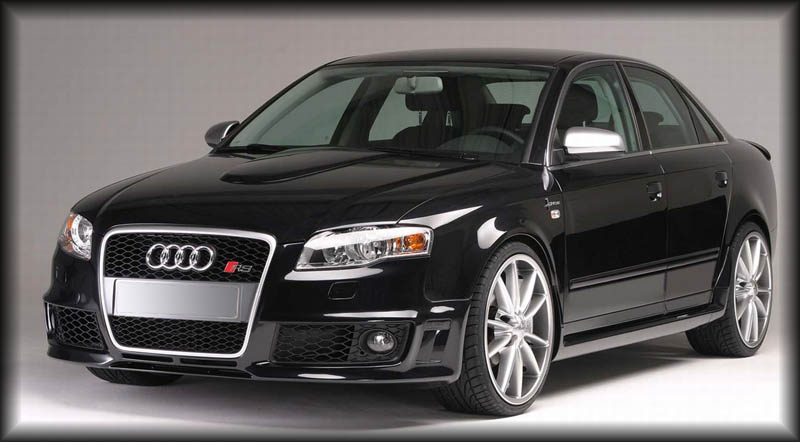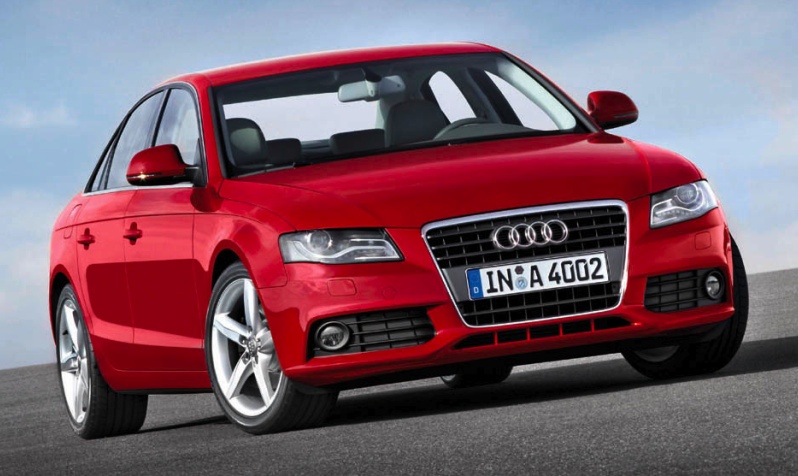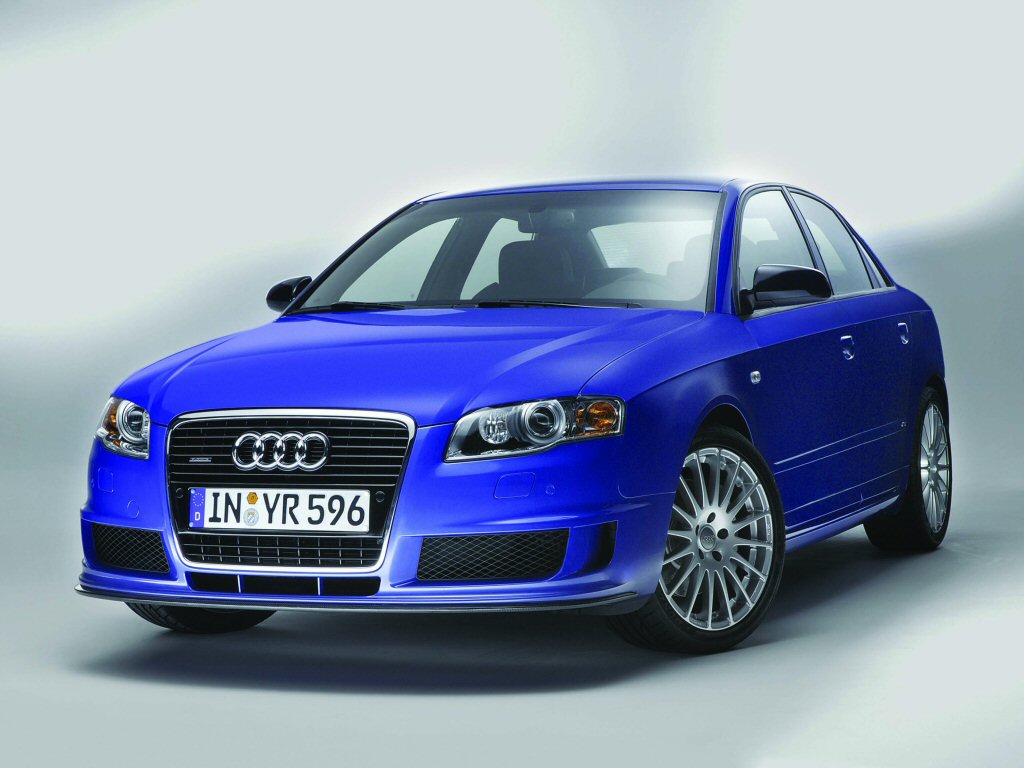Audi A4
The Audi A4 is a compact executive car produced since late 1994 by the German car manufacturer Audi, a subsidiary of the Volkswagen Group.
The A4 has been built in four generations and is based on Volkswagen's B platform. The first generation A4 succeeded the Audi 80. The automaker's internal numbering treats the A4 as a continuation of the Audi 80 lineage, with the initial A4 designated as the B5-series, followed by the B6, B7, and the current B8. The B8 A4 is built on Audi's new MLB platform,[citation needed] which is currently exclusive to Audi and not shared by models outside the Audi brand, including any from VW.
The Audi A4 automobile layout consists of a longitudinally oriented engine at the front, with transaxle-type transmissions mounted at the rear of the engine. The cars are front-wheel drive, or on some models, "quattro" all-wheel drive.
The A4 is available as a saloon/sedan and estate/wagon. The second (B6) and third generations (B7) of the A4 also had a convertible version.
B5 (Typ 8D, 1994–2001)
The first-generation Audi A4 (known internally as the Typ 8D) was debuted by Audi in 1994,with production starting November 1994. It was built on the Volkswagen Group B5 (PL45) platform, which it shared with the fourth generation Volkswagen Passat (B5, Typ 3B). It had a front-mounted longitudinal engine and front-wheel drive. Many variations of the A4 were also available with Audi's quattro four-wheel drive system. The A4 was initially introduced as a four-door saloon/sedan; the Avant (estate/wagon) arrived a year later.A wide range of internal combustion engines were available in European markets, between 1.6 and 2.8 litres for petrol engines; and a 1.9 litre diesel engine available with Volkswagen Group's VE technology, capable of achieving a 90 PS (66 kW; 89 bhp) or 110 PS (81 kW; 108 bhp), although Audi's 2.8 litre V6 engine, carried over from the old 80/90 was the only engine option in North America until 1997.
The Audi A4 was the first model in the Volkswagen Group to feature the new 1.8 litre 20v engine with five valves per cylinder, based on the unit Audi Sport had developed for their Supertouring race car. A turbocharged version produced 150 PS (110 kW; 148 bhp) and 210 newton metres (155 lb•ft) torque. This technology was added to the V6 family of engines in 1996, starting with the 2.8 litre V6 30v, which now produced 193 PS (142 kW; 190 bhp).
Audi also debuted their new tiptronic automatic transmission on the B5 platform, based on the unit Porsche developed for their 964-generation 911. The transmission is a conventional automatic gearbox with a torque converter offering the driver fully automatic operation or manual selection of the gear ratios.
B5 facelift (1997–2001)
A refreshed B5 A4 range appeared at the 1997 Frankfurt Motor Show, with sales beginning in Europe in early 1998. The 2.8 litre 30-valve V6 engine replaced the 2.8 litre 12-valve. A 2.5 litre V6 Turbocharged Direct Injection (TDI) diesel engine with 150 PS (110 kW; 148 bhp) was standard on the quattro. A six-speed manual gearbox was available, as well as the new high-performance Audi S4, now part of the A4 lineup (the previous S4 had been an Audi 100). Cosmetic updates included new rear lights, headlights, door handles, and other minor exterior/interior changes.n mid 1998, the 1.8 20vT engine available outside Europe had its power output raised to 170 PS (125 kW; 168 bhp). The previous KKK K03 turbocharger, although fundamentally unchanged, received revisions on the turbine side to prevent cracking due to heat.[citation needed] The 12-valve V6 was replaced by the 30-valve unit which had been available in Europe for two years. In 1999, Audi debuted an even higher performance RennSport model, the RS4 Avant, like its predecessor RS2, available only in the Avant bodystyle.
B6 (Typ 8E/8H, 2000–2005)
An all-new A4, internally designated Typ 8E, debuted in late 2000, now riding on the all-new Volkswagen Group B6 (PL46) platform. The car's new styling was a great success, inspired by the C5 (second-generation) Audi A6. The 1.6 litre base model powerplant remained unchanged, but most other petrol/gasoline engines received either displacement increases, or power upgrades. The 1.8 litre 20-valve Turbo was now available in two additional versions, with 150 PS (110 kW; 148 bhp) or 180 PS (132 kW; 178 bhp), this one with a standard six-speed manual gearbox, while the naturally aspirated 1.8 litre inline-four engine and 2.8 litre V6 were replaced by 2.0 litre, and all-aluminium alloy 3.0 litre units, still with five valves per cylinder, the most powerful of which was capable of 220 PS (162 kW; 217 bhp) and 300 newton metres (221 lb•ft) of torque. The 1.9 Turbocharged Direct Injection (TDI) engine was upgraded to 130 PS (96 kW; 128 bhp), with Pumpe Düse (Unit Injector) (PD) technology,and was now available with quattro permanent four-wheel drive, while the 2.5 V6 TDI high-end model was introduced with 180 PS (132 kW; 178 bhp) and standard quattro. This generation of quattro consists of default of 50:50 front to rear dynamic torque distribution. A Bosch ESP 5.7 Electronic Stability Programme (ESP) system, with Anti-lock Braking System (ABS), brake assist, and Electronic Brakeforce Distribution (EBD) were standard across the range. The Avant arrived in mid 2001.

















No comments:
Post a Comment